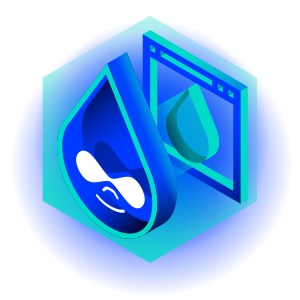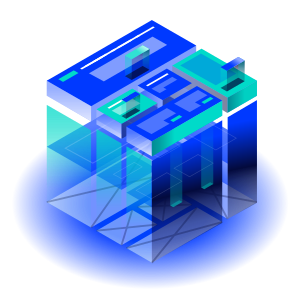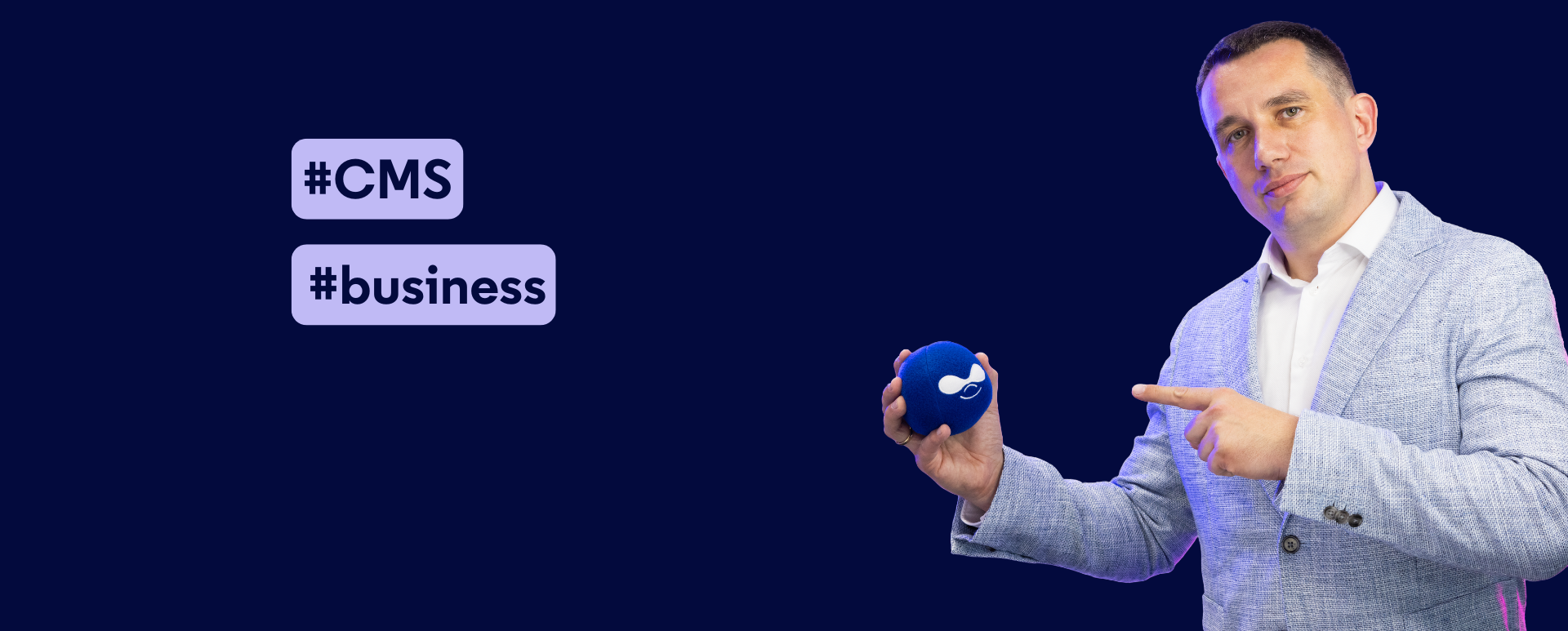
Drupal Implementation Questions. What Customers Ask About in 2025?
Choosing a content management system is a strategic decision for any organization. Since the beginning of 2025, we have received approximately 200 inquiries regarding the implementation of new projects based on Drupal. After analyzing these messages, we identified 10 categories of questions that most frequently arise among companies considering implementing this CMS. In this article, I will present these questions along with their answers. The text is based on my video from the Nowoczesny Drupal channel.
In this article:
- Analysis of customer inquiries: two main types of questions
- 1. Frontend and responsiveness – what will the Drupal site look like?
- 2. Content editing - can content be easily managed?
- 3. Integrations – will Drupal connect with existing systems?/a>
- 4. Data migration from other platforms
- 5. E-commerce migrations
- 6. Artificial intelligence in Drupal – a new trend in 2025
- 7. Security - is Drupal secure?
- 8. Marketing functions
- 9. Hosting
- 10. System maintenance costs
- Key trends in Drupal development projects in 2025
Analysis of customer inquiries: two main types of questions
Questions about Drupal can be divided into two main categories. The first category consists of questions about new implementations. Companies are looking for a CMS and are considering various options, including Drupal. These are organizations that often have no previous experience with this system and ask basic questions about capabilities, costs, and security.
The second category consists of questions about taking over existing systems. Organizations already have Drupal up and running, but need better technical support, updates, or further development. This article focuses on the first group—questions about new Drupal implementations from customers who want to better understand whether Drupal meets their needs. I will present the 10 most frequently asked categories of questions, based on an analysis of messages we have received since the beginning of 2025.
1. Frontend and responsiveness – what will the Drupal site look like?
Customers with no experience with Drupal often start with questions about appearance and functionality. They are most often interested in responsive templates because they need websites that work on all devices—desktops, tablets, and smartphones. In 2025, some customers still have systems that are not fully adapted to RWD (Responsive Web Design), which is why they often emphasize this issue in their inquiries.
The process of implementing a design in Drupal based on a Figma project is similar to other technologies. You need to code the appearance using template files (in Drupal, it is Twig – the same system as in Symfony), add CSS and JavaScript files. There is nothing specific to Drupal here – if something is designed in Figma, it can be transferred to this CMS.
Frontend costs can be reduced by using ready-made solutions such as Droopler or Open Intranet, where the theme is already largely prepared and only needs to be adapted to a specific implementation. This approach significantly reduces the amount of frontend work.
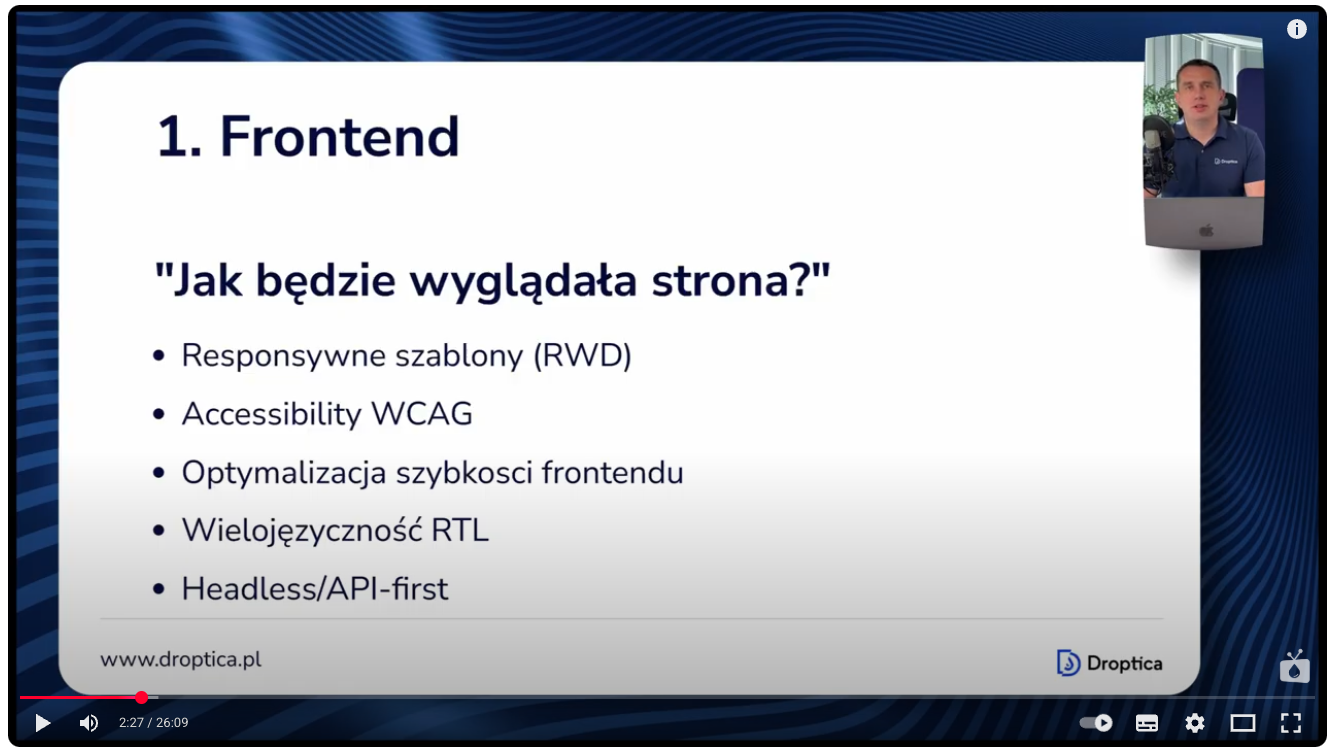
Other frequently asked frontend questions
Customers also often ask about:
- WCAG (Web Content Accessibility Guidelines) - a growing requirement, especially in the public sector and large corporations,
- frontend speed optimization - companies want to improve their search engine rankings by speeding up page loading,
- RTL (Right-To-Left) multilingualism - inquiries from the Middle East region for support for languages written from right to left,
- headless architecture - the ability to use Drupal as a backend with React or Vue on the frontend.
Drupal meets all of these requirements. If your list of requirements for a new CMS includes any of the above features, you can safely assume that Drupal supports them.
2. Content editing - can content be easily managed?
Organizations, especially those that already have various types of CMS systems, need convenient forms and intuitive content editing so that editors can manage content on their own. On the other hand, IT departments would like to limit editing so that editors do not accidentally break the entire layout by inserting incorrect HTML code.
There are also questions about a library of ready-made components for building subpages. It is available in the Droopler system and will soon be available in the Experience Builder module as well.
Customers also ask about media management. Companies with older CMS systems written from scratch are particularly interested in this topic. In such cases, editors often had to insert graphics or videos into each subpage from scratch because they could not reuse media that was already available in the system.
Publication workflow for marketing and HR teams
For larger marketing or HR teams, the publication workflow is important – support for the stages of content creation by the CMS. For example, marketing team can create blog posts according to the process: initial editing → adding media → SEO optimization → publication. The system enforces specific steps in content creation.
Drupal also offers rich SEO options. Currently, AI tools such as ChatGPT or Claude can be used to scan a website and generate recommendations for changes to improve SEO. However, the CMS system must allow for easy management of SEO-related metadata - URLs, meta tags, and similar elements. Drupal has many ready-made modules that enable this. The system meets the above-mentioned requirements for content editing very well and allows them to be tailored to a given organization.
3. Integrations – will Drupal connect with existing systems?
Virtually every project requires integration with an organization's existing systems. IT departments usually start by asking about Drupal user accounts – can they be integrated with Google Workspace or Microsoft Azure so that employees can log in to multiple company systems with their existing accounts? For example, the marketing department logs into the CMS system using a Microsoft or Google Workspace account, or all employees in the company log into the intranet using a Keycloak account.
Customers also ask about integrations with:
- CRM systems - Hubspot, Pipedrive, Salesforce (this usually involves contact forms that must create deals in the sales system),
- marketing automation - Mautic, Mailchimp, Hubspot,
- PIM and ERP systems - for presenting data about products or inventory levels,
- e-commerce – Magento, Sylius (this often involves presenting selected products on the company website in order to redirect the user to the store).
Ways of integration in Drupal
There are several ways to integrate in Drupal.
- Ready-made Drupal modules – for popular SaaS systems, available on Drupal.org. It is important to pay attention to their capabilities, as they do not always allow us to do what we want. However, they can usually be expanded by writing small submodules that adapt the ready-made modules to specific needs.
- REST API – built into the Drupal core, it allows this CMS to be integrated with other systems.
- Custom modules – written in PHP with any logic, they enable the integration of Drupal with any system.
In summary, Drupal can be integrated with any software of your choice. Only the costs of integration will vary depending on its complexity.
4. Data migration from other platforms
Organizations already have content in other systems and want to transfer it to Drupal. They most often ask about migration from WordPress, Joomla, Plone, or other open source systems. In such cases, companies have already used these types of solutions, but they had limitations. That is why they are looking for new solutions that offer more possibilities.
Some customers also ask about migration from custom CMSs. These companies have their own solutions, but want to switch to proven open source systems while retaining their data.
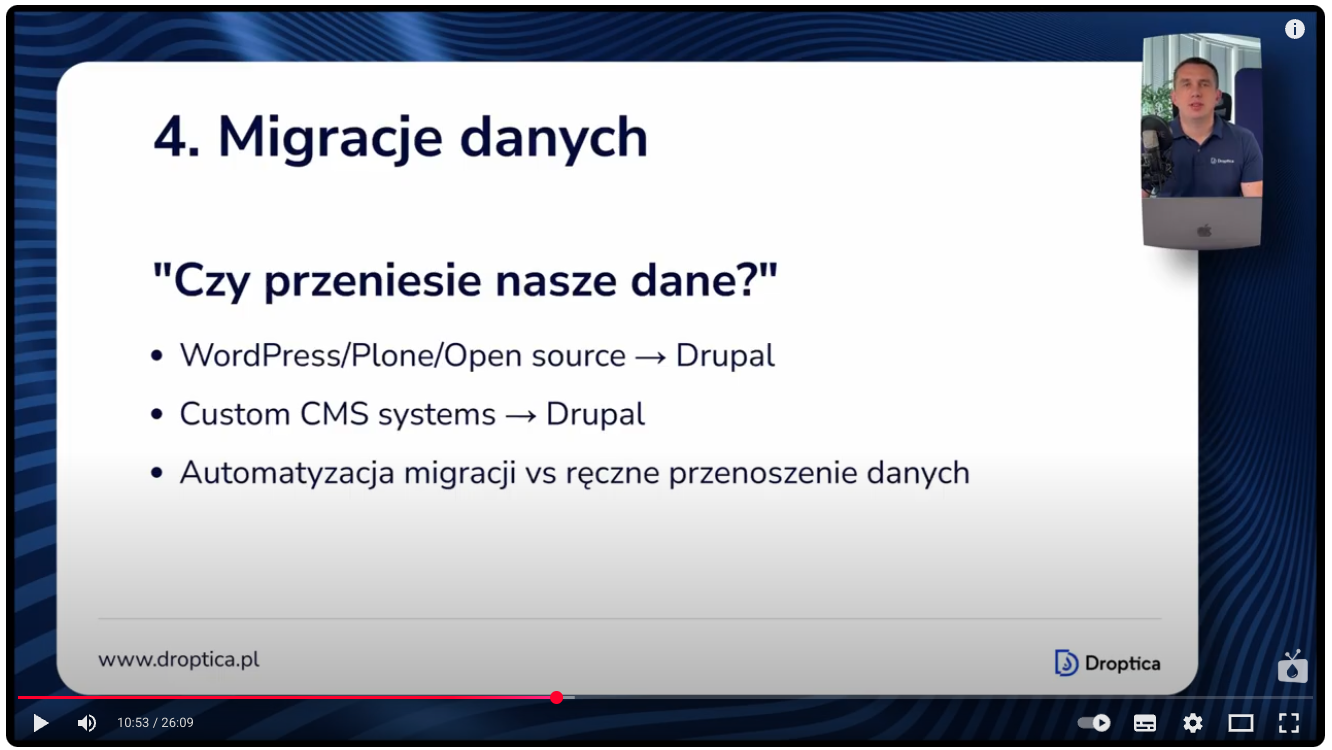
There are also questions about whether content migration can be automated. In Drupal core, there is the Migrate API, a mechanism for migrating data from various sources (databases, XML files). You can write an entity-by-entity migration mechanism while adding changes such as data enhancements, structural changes during migration, or blog post category changes.
There are cases where content is not migrated automatically.
- Little content. When a company has around 100-200 items, manual transfer may be cheaper.
- Content improvement - when existing content is outdated or does not fit the new data structure. For example, we previously had a content management solution with one large text field, and now we want to build subpages with nice components - with photos, videos, and icons. In such cases, manual transfer will be a better decision. You can also consider transferring to a new structure using AI, which will convert old content into a new structure, with photos and icons. However, AI can sometimes "overthink" such actions, so someone will have to test the correctness of all migrated content.
5. E-commerce migrations
We receive inquiries from companies that currently have a separate e-commerce system and a separate website. The store is operational and collects orders, the website has content that encourages purchases, but there is a lack of integration and consistency, e.g., the appearance of the website differs from that of the store, and users are often redirected between systems during their shopping journey, which leads to abandoned purchases.
Marketing departments come to us with the concept of integrating these systems—e-commerce and the company website—into one system. This is where Drupal works very well.
Drupal Commerce – a proven e-commerce solution
The possibilities of Drupal as a CMS are enormous, virtually unlimited. The Drupal ecosystem also includes the Drupal Commerce module, the latest version of which is already used by over 20,000 websites around the world. This number is constantly growing, and the functionality of the store and the module are constantly being developed.
Example of integration: Develey.pl
A good example of such an integrated system is Develey.pl. It has a section with recipes – instructions on how to cook something. Under each recipe are the products that were used in that recipe. They can be purchased from a single system, as it contains both content and e-commerce – there is no need to redirect the user to other systems or subdomains. This also facilitates marketing analytics – the data in Google Analytics or Matomo is shared, as it is a single system. This makes it much easier for teams to analyze customer purchase paths.
If a company wants to significantly improve its e-commerce activities, it is worth considering switching to Drupal, which combines CMS and e-commerce in a single system, opening up much greater opportunities for online marketing.
6. Artificial intelligence in Drupal – a new trend in 2025
Questions about artificial intelligence often appear in the inquiries we receive this year. Customers ask about:
- integration with ChatGPT or other LLM models,
- automatic content creation (complete or partial) – adding alt text to images or tags to articles,
- personalization – AI tailoring content to the user currently using the system, based on their activity history on the website,
- chatbots – using a pre-prepared knowledge base (especially important for companies implementing intranet systems or systems with a knowledge base, e.g., about products).
Drupal has an entire ecosystem of AI-related modules. All of the above-mentioned issues can be implemented in various ways and tailored to a specific organization.
7. Security - is Drupal secure?
Security is particularly important for the public and financial sectors. Companies ask about GDPR (European data protection regulations) - whether the system ensures the right to delete data and consent to processing. Larger teams need granular permissions - precise management of who can do what in the system at the level of individual content, fields, or sections. Regular security updates are also important for organizations.

Advantages of Drupal security
Many open source systems do not approach security as well as Drupal. The Drupal Security Team regularly checks the core and modules, and if a vulnerability is found, a new version is released. It is always released on Wednesdays around 7:00 p.m. Polish time. This means that your organization can prepare for the possible implementation of security patches on Wednesday evening or Thursday morning. As part of the Drupal support service, our specialists at Droptica implement such changes to the systems.
8. Marketing functions
Organizations need digital marketing tools. They ask about:
- content personalization – different content for different user segments,
- AB testing – testing different versions of landing pages, buttons, and headlines,
- SEO – friendly URLs, meta tags, XML sitemaps,
- integration with email marketing - connecting CMS with Mailchimp, ways to automatically send newsletters,
- lead generation – contact forms, landing pages, conversion tracking,
- CRM integration - automatic transfer of leads to sales systems.
Drupal allows you to implement a marketing tool and tailor it to the needs of your company.
9. Hosting
The main considerations concern the choice between a cloud solution and your own servers. Drupal is written in PHP and can be installed on any hosting - cloud, own server, AWS, Google Cloud, platforms such as Pantheon or Upsun (formerly Platform.sh), where we most often host Drupal websites.
If a company has its own server, it can host Drupal there. If an organization does not want to deal with server maintenance and Drupal hosting, it can outsource this to an external team, such as Droptica. We keep the systems on our own infrastructure. We choose a specific solution depending on the specifics of the project. For small and medium-sized systems, this is usually Upsun, and for more complex ones, AWS or Hetzner. Drupal also works well with CDN (Content Delivery Network) systems such as Claudflare. There are ready-made modules that integrate Drupal with most CDN or proxy systems. Such integration significantly improves the speed of the Drupal system.
Our observations show that companies are increasingly choosing PaaS hosting platforms (e.g., Upsun or Pantheon), which use cloud solutions such as AWS or Google Cloud underneath, but also have additional tools to improve performance.
Some companies also ask about SLA uptime. In this case, the answer depends on the hosting and the company responsible for maintaining Drupal. At Droptica, among various options, we offer Drupal hosting with SLA above 99% and 24/7 support.
10.System maintenance costs

Main version upgrade
Once every 4 years, it will be necessary to upgrade Drupal to a higher version, for example, from Drupal 10 to Drupal 11. In Drupal, it is now accepted that long-term support (4 years) will be offered for a given version. For example, Drupal 10.0 was released in 2022 and will be supported until 2026. After that time, no security updates will be released, and maintaining the system in this version will be quite risky. When deciding to implement Drupal now, it is worth choosing version 11 to postpone the task of upgrading the version.
Costs of improvements and functionalities
Another monthly cost is improvements and new features. We often offer our clients hourly packages, for example, 40, 70, or 100 hours per month, which can be used for improvements, but also for security updates. This gives the customer the certainty that we are ready to carry out their tasks and work on their system every month. The package approach is also convenient for customers, as they can plan the basic version of the system at the beginning and then implement further improvements throughout the year. This is more acceptable for the budgets of many organizations.
The costs of maintaining Drupal boil down to the time needed for:
- security updates,
- hosting server maintenance,
- system improvements.
Key trends in Drupal development projects in 2025
Based on an analysis of the inquiries we have received, we can identify the following key trends:
- AI integrations have become a must-have. Every second customer asked about various options related to artificial intelligence.
- Hosting platforms are the new standard. Most organizations prefer this solution to maintaining their own servers.
- E-commerce and CMS as a single platform. Companies want to combine an online store with advanced marketing content management.
- Support for RTL languages in the CMS system. There are more inquiries from the Middle East region about support for right-to-left languages.
- Fewer inquiries about headless architecture. Customers prefer traditional CMS solutions. They want to simplify the architecture of their systems and reduce their number in order to lower the overall costs of software maintenance and development.
If you need help with Drupal development, support for your existing system, or migration from another CMS, we are happy to help.







